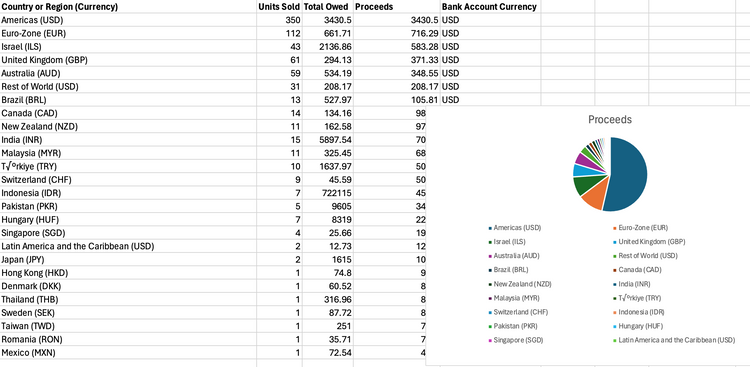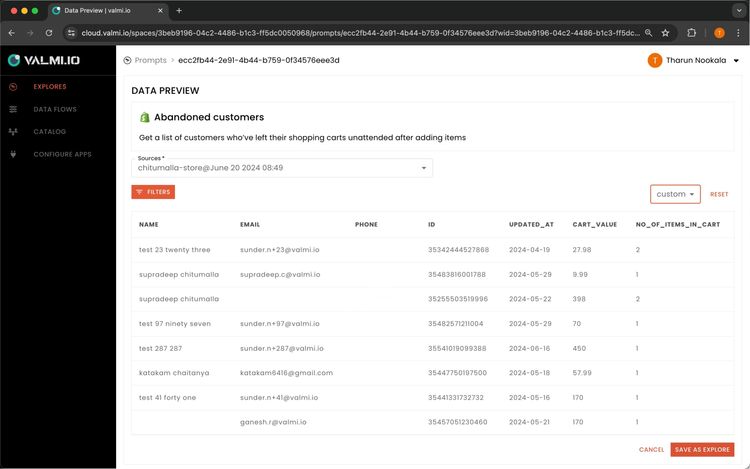Why should e-commerce be Data-Driven?

Ever wondered how the world would’ve been without e-commerce or online shopping options? Do you remember your first online shopping experience and what did you buy then? You probably wouldn’t remember it but browsing through your shopping history will get you the ‘right’ answer. Have you ever pondered why you are shown only a certain kind of product on your shopping website? This is also an outcome of your shopping data.
With so much shopping data with them, e-commerce companies are surely spoilt for choices. Here, using data smartly can make a huge difference. Think of it like having a superpower that helps you understand your customers better and make smarter decisions for your online store.
By looking at the data on what people buy, how they shop, where they belong when they buy and what they like, one can figure out the shopping patterns of customers and based on that data, companies can make decisions covering areas like marketing campaigns, product personalization, high selling products, inventory stocking etc. This helps the companies to improve their website, target the advertisements better, and offer products that people want. The advertisements can be via social media platforms like Facebook, Instagram, Google ads etc.
Then vs Now
In the past, e-commerce business decisions were often made based on intuition, limited knowledge, and experience, without the benefit of data-driven insights. Merchants would rely on their instincts or anecdotal evidence to choose products, set prices, and create offline marketing campaigns. While these approaches yielded success for companies, they would have been much better if they were powered by the precision and comprehension that data-driven techniques offer.
In today's e-commerce environment, data analytics plays a significant role in decision-making processes. By using advanced tracking systems, businesses can collect and analyze vast amounts of data, including customer behavior, sales performance, and website traffic amongst others. This abundance of information provides valuable insights that assist companies in making more informed and strategic decisions in all areas of their operations.
This is how e-commerce has evolved from a traditional way of data gathering to making data-driven decisions.
Better product offering
As an e-commerce business owner, in the absence of data will you be able to accurately predict what people will want to buy next month or next year ?? This whole online marketplace runs on what’s hot and what’s not. By analyzing past sales and current trends, businesses make educated guesses about how much of a product they'll need to stock to meet customer demand.
Businesses can also optimize their product selection by offering items that are more likely to appeal to their target audience by analyzing sales statistics, customer reviews, and market trends.
Personalization is paramount

Did you sometimes notice emails that some online shopping companies send you by addressing you ‘personally’ and with items that you considered buying at some time? Yes, this is a classic example of ‘Personalisation’ that e-commerce brands use to reach out to customers. And if you are a person who gets excited about customized messages on packages, coupons, offers, discounts and freebies, then the companies have found the right target audience :)
All these are part of larger tactics that companies employ to make you buy their products. According to an estimate, companies that get the ‘personalisation’ right generate more than 40% of their revenues using this technique.
To get this right, businesses collect and analyze customer data such as browsing history, purchase behavior, demographic information etc. (amongst others) to deliver personalized content like recommendations, offers etc. to customers to increase engagement and drive sales.
Customer journey is everything
Have you ever wondered why a customer’s session on your website ended suddenly or why he/she couldn’t order products they added to the cart? One wouldn’t know the reasons unless one understands the customer's behavior or their pain points in the customer journey(s).
A logical way to understand this is by using tracking metrics which help us understand the places at which the customer may have stopped buying the products. By tracking metrics such as bounce rates, time on site, and cart abandonment rates, businesses can identify areas of improvement and make changes to enhance the overall customer experience, leading to higher conversion rates and customer satisfaction.
Accurate marketing campaigns

A pertinent question boggling business owners is whether they are doing enough to get to the right customers. Are the companies doing enough to understand the customer needs? Do the business owners know the trustworthiness of their products in the market? Are we targeting the right customer base?
Marketing campaigns answer most of these questions and if targeted in the right way, they create funnels for expanding the customer base too. Typically, B2C companies spend 5-10% of their revenue on marketing their products.
A significant way to build trust with your brand and reach more audiences is by targeting customers using various mediums such as email, search engines, social media, affiliate marketing etc. By tracking metrics such as click-through rates, conversion rates, and return on ad spend (ROAS) etc., businesses can optimize their marketing efforts to reach the right audience with the right messaging at the right time.
Hasslefree Inventory management

If you are running an e-commerce company and are flooded with orders in a particular season, how would you determine your inventory to tackle such scenarios? Tricky right? You could also face a situation where your inventory is nearly full and you have no orders coming in, how would you tackle this? Companies typically use historical data to analyze and understand the orders from the earlier seasons to determine the inventory levels for the upcoming season(s). They also deploy predictive models to get to a probable degree of inventory. Businesses can reduce stockouts, minimize carrying costs, and maximize sales by analyzing past sales data, seasonality trends, and demand projections to determine inventory levels, replenishment timings, and the most suitable product selection.
Optimize your conversion rates
Anyone running a brick-and-mortar store wants more people to buy things from them. Well, that's what businesses want online too! They want to turn more visitors into customers.
At times, one would have noticed that some e-commerce websites are too complex to buy anything. It could be due to a complicated checkout process, or due to the slow response of the website. Data-driven strategies can help solve these problems by measuring customer churn and slow response times, thereby enabling businesses to tweak their website design and layout to better the overall customer experience. After all, it’s about making the online shopping experience as smooth and enjoyable as possible!
To measure the user experience, an online business might show one group of visitors a blue "Buy Now" button and another group a green one. By comparing how many people click on each button, the online business can figure out which color works better at convincing people to buy.
Conclusion
Data has indeed simplified decision-making with accurate results and taken businesses to the next level. Success in e-commerce hinges on how well businesses utilize their data. They must be ready to tackle the hurdles that data brings out. Overcoming these challenges is crucial for their sustenance. Through data-driven approaches, online businesses can not only remain competitive but also continue to expand in the digital era. In short, being data-driven isn't just a bonus—it's the key to prosper in the online marketplace!
#ecommerce #data #dataanalytics #facebookads #googleads #marketing





